|
 Secure Site
Secure Site
|
 |
Archive for the 'Zen Timers' Category
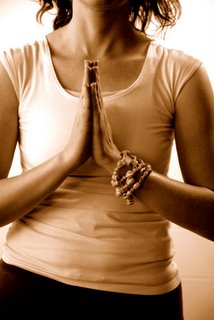 wellbeing The longer you sit at your desk, the more your posture resembles the curved, compressed arch of a camel’s hump — and the more uncomfortable you feel. Your back stands to suffer long-term misalignment as a result of slumping, while the resulting impaired breathing can lead to chronic muscle tension and drag your energy level down.
With its emphasis on core strength and alignment, Pilates counters these stresses by helping you look — and feel — a little taller. “This particular fitness discipline aims to create stability and freedom through the entire body by targeting the muscle groups that support the spine,” says New York City-based fitness and Pilates instructor James Darling. That includes the muscles deep within the back, abdomen, and pelvis. By focusing equally on strengthening and lengthening, the following Pilates favorites will foster a buoyant support system for your spine, bringing deeper breathing, more energy, and posture that’s both graceful and effortless.
Spine Stretch Forward
What It Does
Creates space between the vertebrae, lengthens the muscles of the back, and reduces lower back pain. Counteracts stress by calming the nervous system.
How to Do It
Sit on the floor with legs straight and spine tall. Drop your chin into your chest and contract your core, as if you’re trying to curl your torso up and over a beach ball. Focus on drawing your center in as opposed to curving your spine. Rest your hands where they fall, and breathe here for 30 seconds to a minute, use your Zen Timer to repeast the process with the “repeat mode”. Slowly roll back up to the starting position. Repeat six times.
adapted from Body + Soul, October 2008
Use our unique “Zen Clock” which functions as a Yoga Timer. It features a long-resonating acoustic chime that brings your meditation or yoga session to a gradual close, preserving the environment of stillness while also acting as an effective time signal. Our Yoga Timer & Clock can be programmed to chime at the end of the meditation or yoga session or periodically throughout the session as a kind of sonic yantra. The beauty and functionality of the Zen Clock/Timer makes it a meditation tool that can actually help you “make time” for meditation in your life. Bring yourself back to balance.
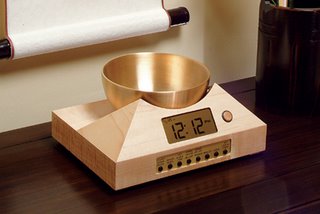 Bowl Gong Timer and Alarm Clock for a Gentle Wake UP Now & Zen’s Yoga Timer Store
1638 Pearl Street
Boulder, CO 80302
(800) 779-6383
Posted in intention, Meditation Timers, Meditation Tools, mindfulness practice, Walking Meditation, Well-being, Zen Timers
 create a sacred place to be mindful Is there a place in your home or yard where you can let go, relax, and renew your awareness of transcendent, loving oneness? It doesn’t take much to create such a place.
Your can create your healing retreat —a garden, a teahouse, a room—or you can claim one that already exists—a window seat, a rock by a stream. Your haven can be a balcony with potted plants and a wind chime, a hot tub surrounded by lavender, a bedroom where you have banished all distractions, or a comforter you roll up in like a cocoon. It needn’t even be a particular place; it can be an experience you recreate each time you need it, like a candlelight bubble bath with fresh flowers and Mozart.
There are no rules about how to create a personal haven, but consider incorporating some of these features (let your heart and your gut guide you):
• A gateway or marked entry to set it aside as sacred
• Privacy (freedom from interruptions and demands)
• A place to rest (a bed, hammock, comfortable stool)
• Calming colors
• Curved shapes
• Soft textures
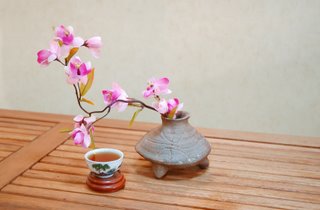 create a sacred space in your house • Plants
• Objects of beauty
• Simplicity, absence of clutter
• Soothing sounds (birdsong, moving water, music, wind chimes)
• Sunlight or soft, warm electric light
• Pleasing scents
• The four elements: air, earth (the ground, stones), water (in a bowl, fountain, or body of water), fire (sun, candles, a fire)
• A long vista, if there’s a pleasant one available
• Symbols of calm, transcendence, love, nourishment (hearts, stars, sun, moon, angels, personal treasures)
You deserve it
If you are like most people, the hardest part isn’t finding or creating a sanctuary; it’s believing that you deserve to spend time there. We tend to be so overwhelmed with demands that time taken away from meeting them feels like time wasted. We somehow learned that doing something just because it feels good is detrimental to others. Question these assumptions.
In fact, great inspiration, beautiful works of art, and profound love arise from the experience of unstructured time. In quiet, we can hear our muses and feel our passions. Here we can dream freely and drink from the deep well of our source. The peace we find carries into all our actions and relationships. What better gift can we give the world?
Although meditation can be done in almost any context, practitioners usually employ a quiet, tranquil space, a meditation cushion or bench, and some kind of timing device to time the meditation session. Ideally, the more these accoutrements can be integrated the better. Thus, it is conducive to a satisfying meditation practice to have a timer or clock that is tranquil and beautiful. Using a kitchen timer or beeper watch is less than ideal. And it was with these considerations in mind that we designed our digital Zen Alarm Clock and practice timer. This unique “Zen Clock” features a long-resonating acoustic chime that brings the meditation session to a gradual close, preserving the environment of stillness while also acting as an effective time signal.
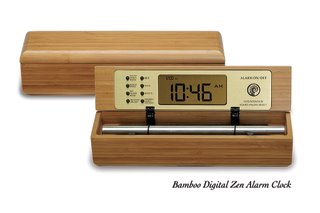 Bamboo Meditation Timers and Alarm Clocks
adapted from Natural Home Magazine, January/February2004 by Carol Venolia
 interiors that create well-being Now & Zen
1638 Pearl Street
Boulder, CO 80302
(800) 779-6383
Posted in Beauty, Chime Alarm Clocks, intention, Japanese Inspired Zen Clocks, Meditation Timers, Meditation Tools, mindfulness practice, Well-being, Zen Timers
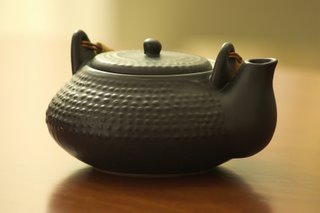 tea solutions What it is
A member of the mint family, lemon balm has a distinct lemony flavor and aroma, which makes it a popular garden herb. Although it’s mild enough to use for treating children’s ailments, lemon balm is a powerful herbal healer for adults as well.
Why it’s used
Herbalists today primarily use lemon balm for easing insomnia, anxiety, stress, and digestive upsets. It is also used to ward off insects and heal bug bites. The recent discovery of the herb’s antiviral compounds has made it popular as a topical treatment for oral and genital herpes.
History and folk remedies
Lemon balm has been cultivated for more than 2,000 years as a medicinal plant. As early as the tenth century, Arab physicians recommended the flavorful herb for easing nervous tension. In medieval Europe, extracts of lemon balm became a fashionable sedative; the emperor Charlemagne decreed that the herb be grown in every monastery garden in his domain. Throughout the Middle Ages, herbalists prescribed lemon balm for insomnia, headaches, nervous stomach, anxiety, depression, and menstrual cramps. From the time of ancient Greece, lemon balm was also used to help heal minor wounds and to treat bug bites and stings.
How it works
Researchers have identified a variety of compounds in lemon balm with mildly sedative properties that relax the nervous system. Other compounds, including fragrant essential oils, help to relieve indigestion. The plant contains polyphenols, compounds that fight infection-causing bacteria; this supports the traditional use of lemon balm for healing wounds. Laboratory studies also show that lemon balm has antiviral properties. Scientists theorize that the herb prevents viruses from attaching to cells.
Scientific support
In a German study, lemon balm combined with valerian (Valeriana officinalis) was found to significantly improve sleep quality when compared with a placebo (Fitoterapia, 1999, vol. 70, no. 3). Another study showed that the same herbal formula was as effective as the pharmaceutical tranquilizer Halcion but without the negative side effects typical of sedative drugs (Therapiewoche, 1992, vol. 42).
 lemon balm The botanical name Melissa comes from the Greek word for bee, because bees love this flowering herb. German researchers have also proven the effectiveness of lemon balm as a herpes treatment. In a recent study, 116 people with herpes sores (oral and genital) were given either a cream containing 1 percent lemon balm extract or a placebo. Those using the herb had a significantly better recovery rate than those using the placebo (Phytomedicine, 1994, vol. 1, no. 1). Another study followed 66 individuals just starting to develop a cold sore. On day two, those using the lemon balm cream were healing more quickly, had less discomfort, and exhibited fewer and smaller blisters than those not taking the herb (Phytomedicine, 1999, vol. 6, no. 4).
Dose
To make a lemon balm tea, pour 1 cup of boiling water over 2 teaspoons of dried leaf (or 2 tablespoons of fresh leaves). Set your Zen Timer with Chime for 15 minutes. Cover, steep for 15 minutes, strain, and drink. For insomnia, drink 1 cup 30 minutes before bed. For stress and anxiety, drink up to 3 cups throughout the day. If you prefer using a concentrated liquid extract, take 1/2 to 1 teaspoon diluted in a small amount of warm water up to three times a day.
adapted from Delicious Living, July 2004 by Laurel Vukovic
“The Zen Alarm Clock & Chime Timer’, uses soothing acoustic chimes that signal it’s time – gently and gradually.
Rather than an artificial recorded sound played through a speaker, the Zen Clock features an alloy chime bar similar to a wind chime. When the clock’s alarm is triggered, its chime produces a long-resonating, beautiful acoustic tone reminiscent of a temple gong.
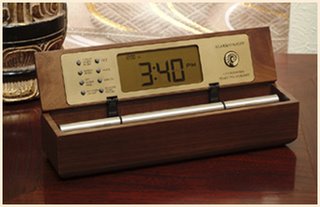 Digital Zen Timer with Chime, a good timer for lemon balm tea Now & Zen’s Chime Timer Store
1638 Pearl Street
Boulder, CO 80302
(800) 779-6383
Posted in Bamboo Chime Clocks, sleep, Sleep Habits, Well-being, Zen Timers
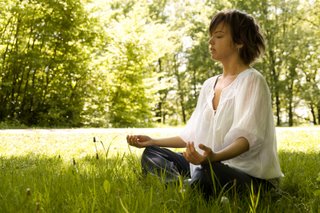 meditation guide With practice, this beginner meditation will hold the mind steady even during periods of stress.
A well-trained, stable, and focused mind is an asset in every sphere of life, and essential for any spiritual endeavor. The practice below will develop your concentration, clarity, and inner stability, by providing a single object as the resting place for your mind’s awareness—the universal mantra soham. Practice daily at about the same time, set your Meditation Timer by Now & Zen for 10 minutes, starting with 10 minutes, and gradually increasing to 20–30 minutes, or longer.
Step 1.
Begin by training your body to be still and comfortable in a sitting posture. When the spine is erect with the pelvis, chest, and head vertically aligned, the breath becomes smooth, and the mind alert and relaxed. Sit on a chair, or cross-legged on the floor with a cushion or a folded blanket under the hips. Use enough support to lift the hip joints slightly higher than the knees. This minimizes the effort needed to keep the lower back from rounding.
Step 2.
Close your eyes and mentally draw a circle of light around yourself. The circle separates you from the world of daily life—both the outer world of perceptions and activities, and the world of your familiar preoccupations and thinking patterns. With this intention, see yourself sitting inside this circle of light. It delineates a space in which you can contain your awareness; let it protect you from disturbances, distractions, and mental dissipation.
Step 3.
Feel the entire body sitting comfortably still, release any unnecessary tension, and pay attention to the movement of the breath. Refine your awareness as you feel the breath become smoother and more subtle, expanding from the solar plexus into the limbs on the inhalation, and releasing back to the solar plexus on the exhalation. Be aware of the touch of the breath everywhere in the body.
Step 4.
Making sure the body and breath stay relaxed, focus your attention at each of the following energy centers, moving systematically through the body and inhaling and exhaling once at each point: eyebrow center · throat center · right shoulder · right elbow · right wrist · each of the right fingertips, starting with the thumb · right wrist · right elbow · right shoulder · throat center · left shoulder · left elbow · left wrist · each of the left fingertips, starting with the thumb · left wrist · left elbow · left shoulder · throat center · heart center · navel center · center of the pelvis · pelvic floor · center of the pelvis · navel center · heart center · throat center · eyebrow center.
Step 5.
Now rest your attention at the eyebrow center. Feel the ebb and flow of the breath through the inner space of the whole body, while maintaining your focus on the eyebrow center. Sense the vibration of a slow wave of breath. This vibration is the mantra soham (pronounced so-hum). Hear the sound so on the inhale, and the sound ham on the exhale. The breath is subtle and slow, so let your concentration be fine and sensitive, becoming more and more one-pointed, and gradually drawing deeper into the mind. Rest in this awareness as long as you like.
To finish the practice, gradually return your awareness to the flow of the breath in the body, the physical presence of the body, and the space around you. Remain aware of the breath and your inner connection as you release the body from your sitting posture. You may want to open your eyes into the palms of your hands, massage your face, and stretch your arms and legs before getting up.
Use our unique “Zen Clock” which functions as a Yoga Timer. It features a long-resonating acoustic chime that brings your meditation or yoga session to a gradual close, preserving the environment of stillness while also acting as an effective time signal. Our Yoga Timer & Clock can be programmed to chime at the end of the meditation or yoga session or periodically throughout the session as a kind of sonic yantra. The beauty and functionality of the Zen Clock/Timer makes it a meditation tool that can actually help you “make time” for meditation in your life. Bring yourself back to balance.
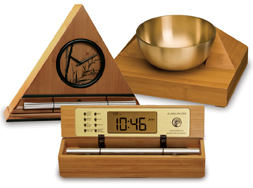 Meditation Timers with Singing Bowls & Chimes adapted from Yoga International Magazine, by Sandra Anderson
 Zen Alarm Clock, Ukiyo-e Hokusai Wave Dial Face, mediation timer and clock Now & Zen’s Meditation Timer Store
1638 Pearl Street
Boulder, CO 80302
(800) 779-6383
Posted in Chime Alarm Clocks, Meditation Timers, Meditation Tools, mindfulness practice, Now & Zen Alarm Clocks, Well-being, Zen Timepiece by Now & Zen, Zen Timers
 throat-soothing tea For natural, reliable cough relief, try a tea recipe recommended by Tieraona Low Dog, M.D., director of education at the University of Arizona’s Program in Integrative Medicine. It features thyme, which alleviates chest congestion and supports respiratory function, along with throat-soothing honey, sage, and vitamin-C-rich lemon.
Cough-Control Tea
1. Pour hot water over 2 teaspoons organic lemon rinds, 1 teaspoon sage, and 1/2 teaspoon thyme. (Dried or fresh herbs can be used.)
2. Set your Zen Timer with Brass Gong for 15 minutes. Cover and steep for 15 minutes.
3. Strain tea, then add juice of 1/2 lemon and 1 tablespoon honey.
4. Drink two to three cups daily for cough relief.
“The Zen Alarm Clock & Chime Timer’, uses soothing acoustic chimes that signal it’s time – gently and gradually.
Rather than an artificial recorded sound played through a speaker, the Zen Clock features an alloy chime bar similar to a wind chime. When the clock’s alarm is triggered, its chime produces a long-resonating, beautiful acoustic tone reminiscent of a temple gong.
adapted from Body + Soul Magazine, May 2008
 Zen Timepiece with brass bowl, a perfect tea timer with gong Now & Zen’s Chime Timer Store
1638 Pearl Street
Boulder, CO 80302
(800) 779-6383
Posted in Zen Timers
 meditation may increase compassion Meditation might be your prescription for a happier mind and kinder heart, a new University of Wisconsin-Madison study shows. Scientists worked with 16 Tibetan monks and 16 meditation novices, giving the beginners lessons on compassion meditation two weeks prior to a series of brain-scan experiments. Those brain scans — taken while the participants responded to different emotional cues — revealed that the monks had more activity in certain brain regions involved in processing empathy. The findings, according to study authors, suggest that meditation may train the brain to increase feelings of compassion and happiness.
To start your own meditation practice, try this exercise created by “Untrain Your Parrot” author Elizabeth Hamilton:
- Set your Zen Meditation Timer with Gong for 20 minutes.
- Sitting with your spine erect, breathe deeply, placing your fingertips over the center of your chest if you like.
- As you inhale, picture a person to whom you want to extend compassion. As you exhale, silently say, “May compassion awaken.” Inhale and exhale for several breaths, focusing on the center of your chest.
- Recalling the person, silently say, “May whatever clouds compassion be healed.” Repeat this cycle with the phrase, “May this moment be experienced, exactly as it is,” and finally, “May compassion be extended to all.”
- Repeat the exercise for 20 minutes until your Zen Timer Gongs.
Use our unique “Zen Clock” which functions as a Yoga & Meditation Timer. It features a long-resonating acoustic chime that brings your meditation or yoga session to a gradual close, preserving the environment of stillness while also acting as an effective time signal. Our Yoga Timer & Clock can be programmed to chime at the end of the meditation or yoga session or periodically throughout the session as a kind of sonic yantra. The beauty and functionality of the Zen Clock/Timer makes it a meditation tool that can actually help you “make time” for meditation in your life. Bring yourself back to balance.
adapted from Body + Soul Magazine, August 2007
 Zen Timepiece, a brass singing bowl clock and timer for meditation and yoga Now & Zen – The Zen Timer Store
1638 Pearl Street
Boulder, CO 80302
(800) 779-6383
Posted in intention, Japanese Inspired Zen Clocks, Meditation Timers, Meditation Tools, mindfulness practice, Now & Zen Alarm Clocks, Well-being, zen monks, Zen Timepiece by Now & Zen, Zen Timers
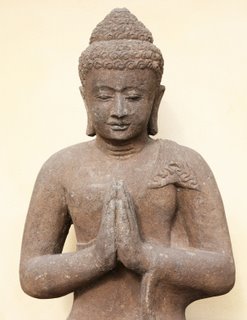 a mediation practice can be done anywhere and anytime Everybody needs a sanctuary, a place to rest and renew. The beauty of meditation — a proven and profound form of self-care for mind and body — is that almost anytime, anywhere, you can access that place of restorative calm.
Yet for some, meditation sounds mysterious or intimidating, probably because of some common misconceptions: that it’s dry or boring or “too spiritual”; that it’s an esoteric practice for those operating on some higher, more rarefied plane.
Yes, meditation is an ancient spiritual practice — one that cuts across different religions and many different traditions. But what it boils down to — however it’s practiced and whatever form it takes — is this: To meditate simply means to rest in moments of appreciative, exquisite attentiveness. Moments that allow us to savor the experience of living and that make us feel both deeply calm and deeply alert, in tune both with our self and with the world around us. Moments we come away from feeling refreshed, renewed, and engaged. Meditation is a way of communing with spirit.
 meditate under tree We all know how to meditate; it’s an instinctive ability. If you’ve ever been deliciously absorbed gazing at the flow of a river, the dance of a fire, or the twinkle of stars, you’ve enjoyed meditative moments. And you can create those moments almost anywhere at any time. If you have a favorite place in your home in which to meditate, that’s wonderful. But you can meditate just as effectively sitting at your desk or on a park bench, or lying in the grass. The fact is, the juicier and more sensual you let meditation be, the more you will get out of it.
Meditating on a daily basis is easy. Give yourself a space of time — 10 to 20 minutes morning and afternoon, or if that’s not possible, a few minutes here and there throughout the day. Set your Bamboo Zen Meditation Timer for a at least 5 minutes. Choose a pleasing, peaceful focus for attention — sensations, such as the flow of your breath; a sound you make, such as ahhh; or a visual image, such as waves coming to shore. This is your home base. Lightly focus your attention, and when your mind wanders off, gently come back to home base. Minds wander — a lot. So go easy on yourself and accept the process.
Although meditation can be done in almost any context, practitioners usually employ a quiet, tranquil space, a meditation cushion or bench, and some kind of timing device to time the meditation session. Ideally, the more these accoutrements can be integrated the better. Thus, it is conducive to a satisfying meditation practice to have a timer or clock that is tranquil and beautiful. Using a kitchen timer or beeper watch is less than ideal. And it was with these considerations in mind that we designed our digital Zen Alarm Clock and practice timer. This unique “Zen Clock” features a long-resonating acoustic chime that brings the meditation session to a gradual close, preserving the environment of stillness while also acting as an effective time signal.
adapted from Body + Soul Magazine, June 2005 by Lorin Roche and Camille Maurine
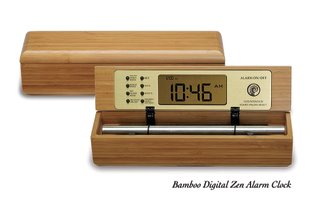 Bamboo yoga and meditation timer, designed especially for meditation practitioners Now & Zen’s Chime Timer and Alarm Clock Store
1638 Pearl Street
Boulder, CO 80302
(800) 779-6383
Posted in intention, Meditation Timers, Meditation Tools, mindfulness practice, Now & Zen Alarm Clocks, Well-being, Zen Timers
 meditation practice can be done anywhere and anytime Meditation: Heart Warming
Time: 5 to 20 minutes.
When and Where: Anytime, although the end of the day is nice. Try to find a cozy place.
Position: Set your Zen Timer to 5 to 20 minutes. Sitting comfortably or lying down, eyes open or closed.
Intention: I am awake to love. I am ready to give and receive.
In this meditation you give yourself time to feel the emotional impact of all that is in your heart. Be leisurely, and linger in any of the meditation’s phases for as long as you like.
1. Begin by thinking of someone or something you love without reservation. Notice the sensations that arise in your heart and let yourself be with whatever is there — warmth, aching, joy, longing.
2. Bring both hands to your heart, feeling the warm contact of your palms against your chest. Imagine your heart being warmed by your love, melting any cold places, any part of you that is afraid, grieving, or lonely.
3. Make a humming sound, such as ahhh or ohhmm. Enjoy the way the sound vibrates in your chest for as long as you like. Then gradually let the sound fade away; you can return to it at any time.
4. Again notice the contact of your hands on your heart. Slowly open your arms outward, as you would to embrace someone. Take a few breaths and then slowly bring your hands back to your chest. Repeat this movement several times with great leisure. The simple motion of opening to give and drawing in to receive is a yoga of the heart, a way of expressing balance. End by bringing your hands back to your heart; pause, savoring the sensations and feelings.
Benefits of Meditation
– Promotes relaxation
– Enhances health
– Cultivates vitality
– Fosters clarity
– Increases focus
– Reduces stress
Use our unique “Zen Clock” which functions as a Yoga & Meditation Timer. It features a long-resonating acoustic chime that brings your meditation or yoga session to a gradual close, preserving the environment of stillness while also acting as an effective time signal. Our Yoga Timer & Clock can be programmed to chime at the end of the meditation or yoga session or periodically throughout the session as a kind of sonic yantra. The beauty and functionality of the Zen Clock/Timer makes it a meditation tool that can actually help you “make time” for meditation in your life. Bring yourself back to balance.
adapted from Body + Soul Magazine, June 2005 by Lorin Roche and Camille Maurine
 Japanese Maple Leaves Dial Face, the Zen Alarm Clock and Timer Now & Zen- Meditation Timer & Alarm Clock Store
1638 Pearl Street
Boulder, CO 80302
(800) 779-6383
Posted in Bamboo Chime Clocks, intention, Meditation Timers, Meditation Tools, mindfulness practice, Now & Zen Alarm Clocks, Zen Timers
 drink more tea Drink more tea.
When the whole Starbucks craze started, I always felt left out when my girlfriends wanted to meet for coffee because while I love the aroma of fresh brewed coffee, the taste makes me gag and cringe. But then a friend turned me onto hot tea, and things have never been the same since.
I love hot tea for many reasons. For one, it has turned out to be my herbal Xanax. It calms me when I’m feeling anxious, and comforts me when I’m having a rough day. I’m known for being freezing cold at all times, so I enjoy holding a hot mug while reading a book or people watching. These are all of my emotional reasons for drinking tea, but here are 10 health reasons to make the switch!
- Tea contains antioxidants that protect your body from the ravages of aging and the effects of pollution.
- Tea has less caffeine than coffee. An eight-ounce cup of coffee contains around 135 mg caffeine; tea contains only 30 to 40 mg per cup. If drinking coffee gives you the jitters, causes indigestion or headaches or interferes with sleep — switch to tea.
- Tea may reduce your risk of heart attack and stroke. Drinking tea may help keep your arteries smooth and clog-free, the same way a drain keeps your bathroom pipes clear.
- Tea protects your bones. It’s not just the milk added to tea that builds strong bones. One study that compared tea drinkers with non-drinkers, found that people who drank tea for 10 or more years had the strongest bones, even after adjusting for age, body weight, exercise, smoking and other risk factors.
- Tea gives you a sweet smile. Tea itself actually contains fluoride and tannins that may keep plaque at bay. So add unsweetened tea drinking to your daily dental routine of brushing and flossing for healthier teeth and gums.
- Tea bolsters your immune defenses. Drinking tea may help your body’s immune system fight off infections.
- Tea protects against cancer. Thank the polyphenols, the antioxidants found in tea, once again for their cancer-fighting effects.
 tea
- Tea helps keep you hydrated. The only time the caffeine becomes a problem as far as fluid is concerned is when you drink more than five or six cups of a caffeinated beverage at one time.
- Tea is calorie-free. Tea doesn’t have any calories, unless you add sweetener or milk. If you’re looking for a satisfying, calorie-free beverage, tea is a top choice.
- Tea increases your metabolism. Green tea has been shown to actually increase metabolic rate so that you can burn 70 to 80 additional calories by drinking just five cups of green tea per day. Over a year’s time you could lose eight pounds just by drinking green tea. Of course, taking a 15-minute walk every day will also burn calories.
People frequently wonder which tea is better – green, black, or white? To be honest with you, there really isn’t enough difference to get overly excited about. All teas generally contain the same amount of flavonoids. Green and black teas come from the same plants, but green tea is dried for a shorter time and doesn’t go through a fermenting process used for black tea.
“The Zen Alarm Clock & Chime Timer’, uses soothing acoustic chimes that signal it’s time – gently and gradually.
Rather than an artificial recorded sound played through a speaker, the Zen Clock features an alloy chime bar similar to a wind chime. When the clock’s alarm is triggered, its chime produces a long-resonating, beautiful acoustic tone reminiscent of a temple gong.
adapted from Ode Magazine, Feb. 2009
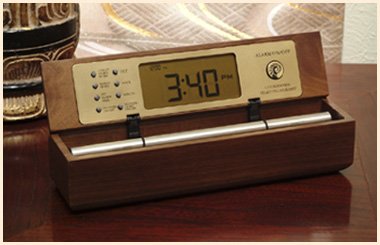 Digital Zen Alarm Clock, a perfect tea timer Now & Zen’s Chime Timer Store
1638 Pearl Street
Boulder, CO 80302
(800) 779-6383
Posted in Bamboo Chime Clocks, Japanese Inspired Zen Clocks, Zen Timers
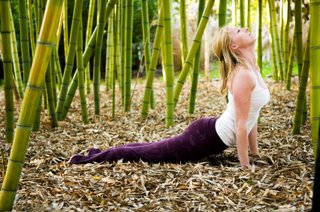 yoga practice in bamboo As Robert Svoboda attempts to summarize the three major paths of the Vedic knowledge, he writes:
Because every embodied individual is composed of a body, a mind and a spirit, the ancient Rishis of India who developed the Science of Life organized their wisdom into three bodies of knowledge: Ayurveda, which deals mainly with the physical body; Yoga, which deals mainly with spirit; and Tantra, which is mainly concerned with the mind.
The philosophy of all three is identical; their manifestations differ because of their differing emphases. Ayurveda is most concerned woth the physical basis of life, concentrating on its harmony of mind and spirit. Yoga controls body and mind to enable them to harmonize with spirit, and Tantra seeks to use the mind to balance the demands of body and spirit.
Use our unique “Zen Clock” which functions as a Yoga Timer. It features a long-resonating acoustic chime that brings your meditation or yoga session to a gradual close, preserving the environment of stillness while also acting as an effective time signal. Our Yoga Timer & Clock can be programmed to chime at the end of the meditation or yoga session or periodically throughout the session as a kind of sonic yantra. The beauty and functionality of the Zen Clock/Timer makes it a meditation tool that can actually help you “make time” for meditation in your life. Bring yourself back to balance.
adapted from wikipedia.org
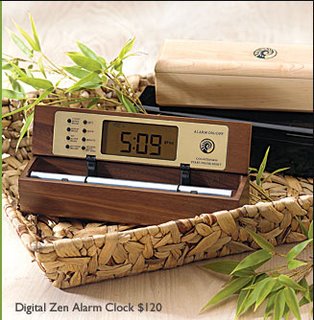 Meditation & Yoga Timers and Clocks
Now & Zen’s Yoga Timer Store
1638 Pearl Street
Boulder, CO 80302
Posted in Chime Alarm Clocks, Japanese Inspired Zen Clocks, Meditation Timers, Meditation Tools, mindfulness practice, Progressive Awakening, Well-being, Yoga Timer, Yoga Timers by Now & Zen, Zen Timepiece by Now & Zen, Zen Timers
« Previous Page — « Previous Entries
Next Entries » — Next Page »
|
|
|
|